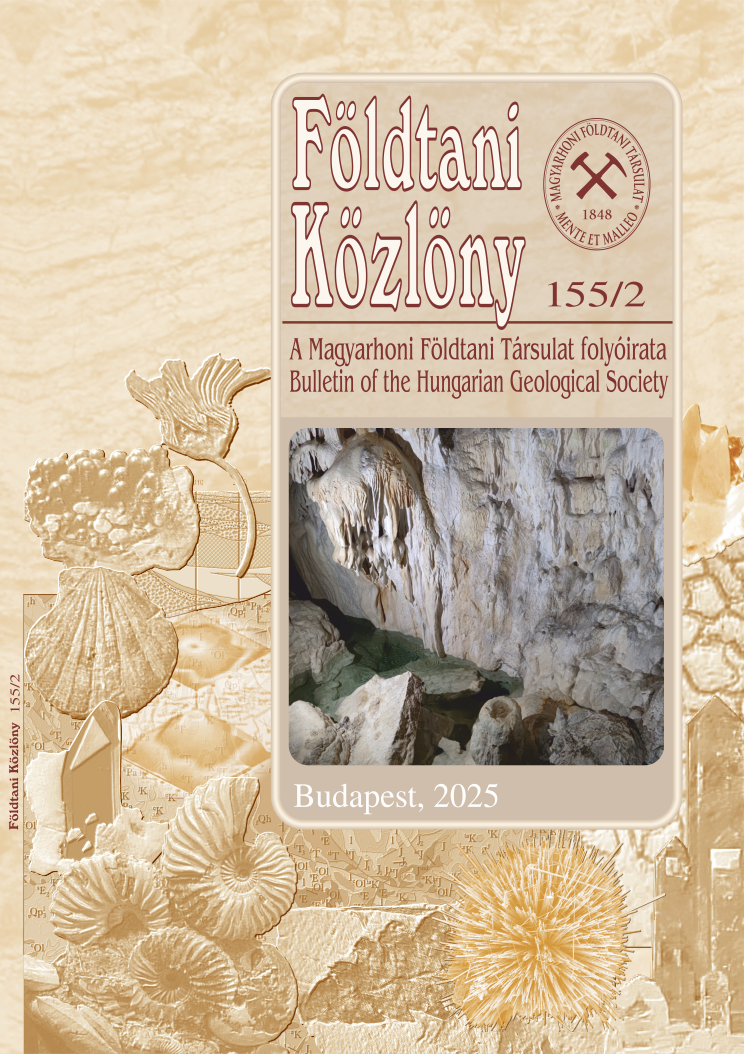Pannonian mollusc fauna from two outcrops near Balatonfűzfő
Abstract
The Pannonian (Late Miocene – Early Pliocene) Tihany Member (formerly Tihany Formation) was deposited in the littoral zone of Lake Pannon and in various deltaic environments. The embedded fossil mollusc fauna faithfully reflects the patchy environmental conditions, and encompasses a wide spectrum of ecological groups, from brackish littoral through freshwater to terrestrial molluscs. This paper gives a fairly complete illustration of the mollusc fauna of the Tihany Member in the Balaton region, based on the palaeontological investigation of two surface outcrops. The first outcrop is a 40 m highsection cut into the Papvásár Hill near Balatonfűzfő. Its mollusc fauna is outstandingly rich with 95 species. The lower part of the outcrop yielded some species that are characteristic of the sublittoral zone of Lake Pannon (Congeria praerhomboidea STEVANOVIĆ, Lymnocardium majeri (HÖRNES)). Mass occurrence of littoral brackish molluscs, such as Melanopsis, Viviparus, Theodoxus, Lymnocardium, Congeria and Unio in the overlying layers indicate gradual shoaling. The sedimentological characters reflect deposition above the wave base, in shallow, intensely agitated water. In the uppermost part of the section paludal layers prevail, with very diverse freshwater snail fauna and transported terrestrial snails. The entire section thus indicates gradual regression, starting from the zone of shallow but unrestricted brackish lacustrine environment in the delta plain through interdistributary bays and ending in seasonally flooded paludal environments. The 9 cyclothemes recognized in the section, however, reveals the cyclic nature of the overall regression process. The other outcrop is an artificial trench that we dug in a ploughland near Balatonalmádi–Vörösberény. The two fossil-rich layers of the outcrop yielded 60 mollusc and 2 fish species, including some relatively rare forms. These layers were deposited above the wave base, in agitated and well-aerated water, in a brackish lacustrine embayment on the delta plain. Their fauna is characteristic of the littoral zone of Lake Pannon. In this study we use a conservative taxonomic nomenclature because we think that revision of the nomenclature should be preceded, and based on, a thorough taxonomic revision of Lake Pannon molluscs.











